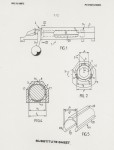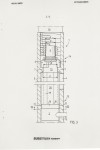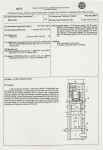The following is a Swedish report translated by Arne Bergkvist – thanks again, Arne! Any mistakes in editing are mine – Ian.
This study is a work of FÖRSVARETS MATERIALVERK, Vapenbyrån, Finkalibersektionen Engineer Per Arvidsson
Lano rifle is the subject. Other rifles in the test will be tested on another occasion.

Background
Until 1989 the standard Swedish service rifle was the 7.62 mm AK 4 (H&K G3). Each platoon (40 soldiers) was equipped with one Hensoldt 4 power rifle scope. The AK 4 and the 4x scope functioned well together. The problem was that the scope mount was not sufficiently rigid, so the point of impact was different from time to time. The mount was also too high for the cheek and difficult to shoot with. To be able to solve a two man patrol task (sniper and observer) on distance combat range, longer than 300 meters, we urgently needed special selected personal with qualified education, and more advanced material than the AK 4.
In 1983, Sweden began testing sniper rifles from several European rifle makers. Most of them were accurate and shot acceptably tight groups, but were not rigid, unreliable, and were heavy, expensive and hard to shoot with. To be frank: they were not made for “one shot – one kill.” Both semi autos and bolt action rifles were tested. The semi automatic rifles were good shooters, but the function was bad and the weight was too much. The most popular rifle was the Austrian Steyr SSG 69, and 39 of these rifles were purchased for testing.
The study lead us to the required specifications:
- “One shot one hit”
Standing man target 800 meter (727 yd)
1/3 man target 600 meter (545 yd)
Head-size target 400 meter (364 yd)
- Maximum weight of rifle 6 kilo (13.2 lb)
- Rifle scope, with 10x magnification, non-adjustable power and simple cross adjustments.
- Scope mount must be 100% rigid
- Detachable magazine
Field Testing
The rifles were tested in troop, technical, tactical and organizational situations. Rifle factories that were interested in participating and developing the future sniper rifle were:
- FFV (Carl Gustaf 90/CG 2000)
- Lano (Lano S)
- Lakelander (m/375)
- Mauser (m/86 SR)
- Steyr (SSG Sweden)
- Accuracy International (PM)
- Parker Hale (m/85)
The suppliers had the opportunity to choose the rifle scope they wanted, within the demanded brands (Swarovski, Leupold, Tasco, Schmidt & Bender and Hensoldt) and specifications for 10 power non adjustable scopes. The test ground was Swedish Army Infantry camp (I 4) in Linköping and Infantry camp ( I 21) in Sollefteå, from September 1986 to May 1987.
All members in the test group had the opportunity to be a part of the testing, in both normal and extreme winter conditions. They would use and shoot with competitors rifle and discuss experiences with officers and snipers. The results from this testing were much appreciated by the involved participants. Even personnel from USMC “Scout Sniper Instruction School” participated during March 1987 and gave valuable feedback.
The evaluation of the test rifle produced three winners: Accuracy International, Lano and Mauser. Price requests and delivery procedure and time schedule from the factories were requested, and showed that Accuracy International and Lano were the best choices. The testing also showed that only Hensoldt and Schmidt & Bender scopes were able to stand the testing. The other rifle scopes did not withstand the severe weather conditions and were rejected. Accuracy International and Lano together with Hensoldt and Schmidt & Bender scopes were ordered for the final trials in 1988/89. The material was to be modified at a number of places, to make all attendants happy.
Final Testing
To this “grand finale,” the following companies were invited:
Rifles: Accuracy International, Lano
Rifle scopes: Hensoldt, Schmidt & Bender
Bipod: Parker Hale
Silencer: Vaime
Ammunition: Norma, Lapua, Sako
Silencers had been tested by the Swedish government since 1983. The reduction of the firing sound will make it harder to find the sniper after “one shoot-one hit.” In addition, silencers reduce recoil and muzzle flash. The Vaime silencer was tested earlier by the army and especially the model that mounts far back on the barrel is interesting because it keeps the total length down, and also reduce the noise well. Accuracy is not affected by the silencer as long at the bullet not touching the inside of the tube. A small change in point of impact can be seen, but is easy to adjust on the rifle scope.
Conclusion
The rifle factories still in the test were very enthusiastic on the task, and spent time perfecting their entries, after finding things that could be improved. There was a positive feeling from both the rifle factories and the troops involved, and a positive exchange of information took place. The project started in 1985 with the initial specifications and ran for four years. The chosen rifles were purchased in 1990, with Lano being the winner.
The idea behind the Lano invention is that “If the bolt always is in the same position at absolute center of the chamber, steering the cartridge, when fire the rifle, it will be best for the accuracy!”
Technical Specs
Origin: Sweden
System: Lano bolt-action repeating mechanism
Caliber: 7.62×51 mm NATO
Magazine capacity: 10 rounds, detachable
Overall length: 1150 mm (45.25 in)
Barrel length: 660 mm (26 in)
Barrel twist: 1 revolution in 12” (1 rev. in 305 mm)
Weight: 6 kg (13.2 lb) with magazine and scope
Stock: Fiberglass, with adjustable length and cheekpiece
Bipod: Detachable (Parker Hale m/85 type)
Optic: Schmidt & Bender 10x42mm mildot type tritium scope with adjustable center bore
Weight of scope: 580g (20.4 oz)
Accuracy: 5 shots within 20 mm /100 meter (0.8″ @ 91 yd)





I’d just like to point out some errors with “Standing man target 800 meter (727 yd)
1/3 man target 600 meter (545 yd)
Head-size target 400 meter (364 yd)”
800m would be 875.2 yards, 600m would be 656.45 yards and 400m would be 437.6 yards
In the conclusion it is stated that “The chosen rifles were purchased in 1990, with Lano being the winner.” Unfortunately that is incorrect, the rifle acquired by the Swedish army as the PSG 90(Prickskyttegevär) was the Accuracy International.
Lano was the winner in the test! Accuracy International was not! None was however the rifle the Swedish snipers would have like to be working whit. It is shown in the heavy modifications that hade to be done in Accuracy Internationals rifle after it was introduced.
I for one find it incredibly amusing that a Military would consider Tasco as a specified brand for scopes. In my experience with that manufacturer you get two varieties of scopes from them, Bad and Horrible.